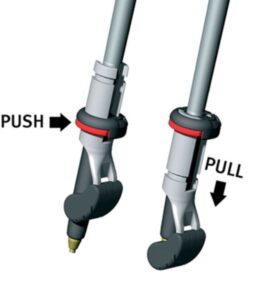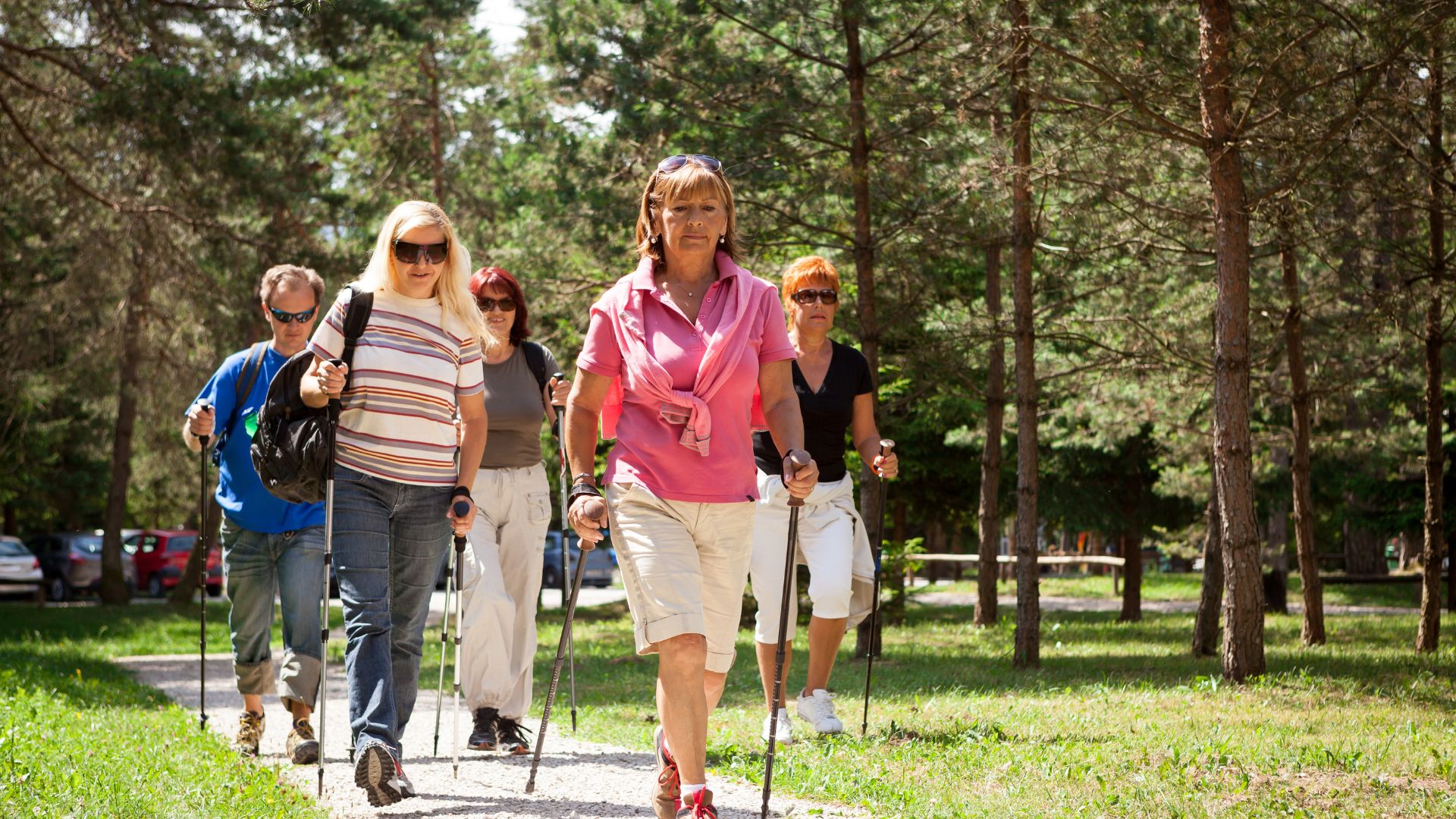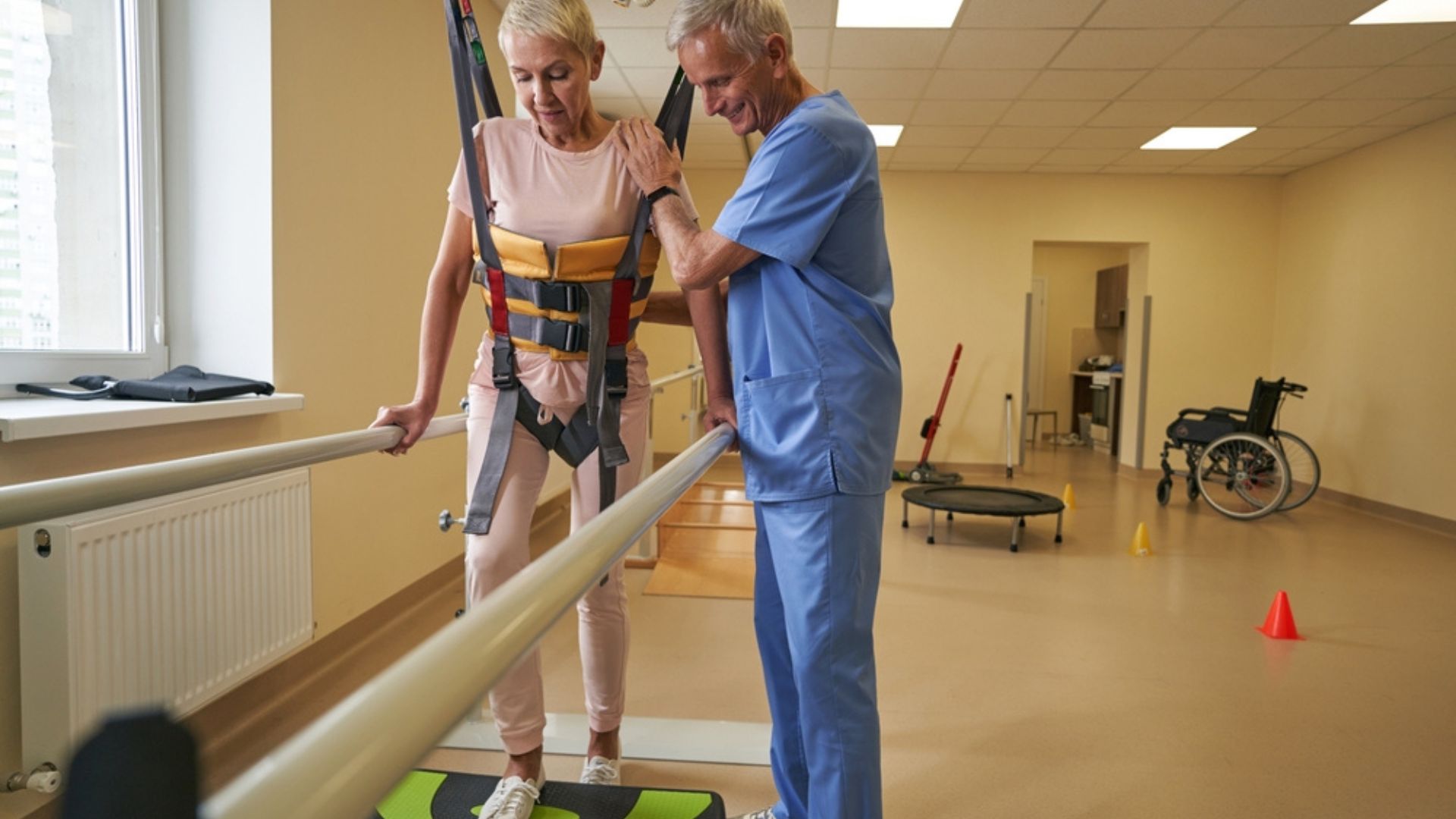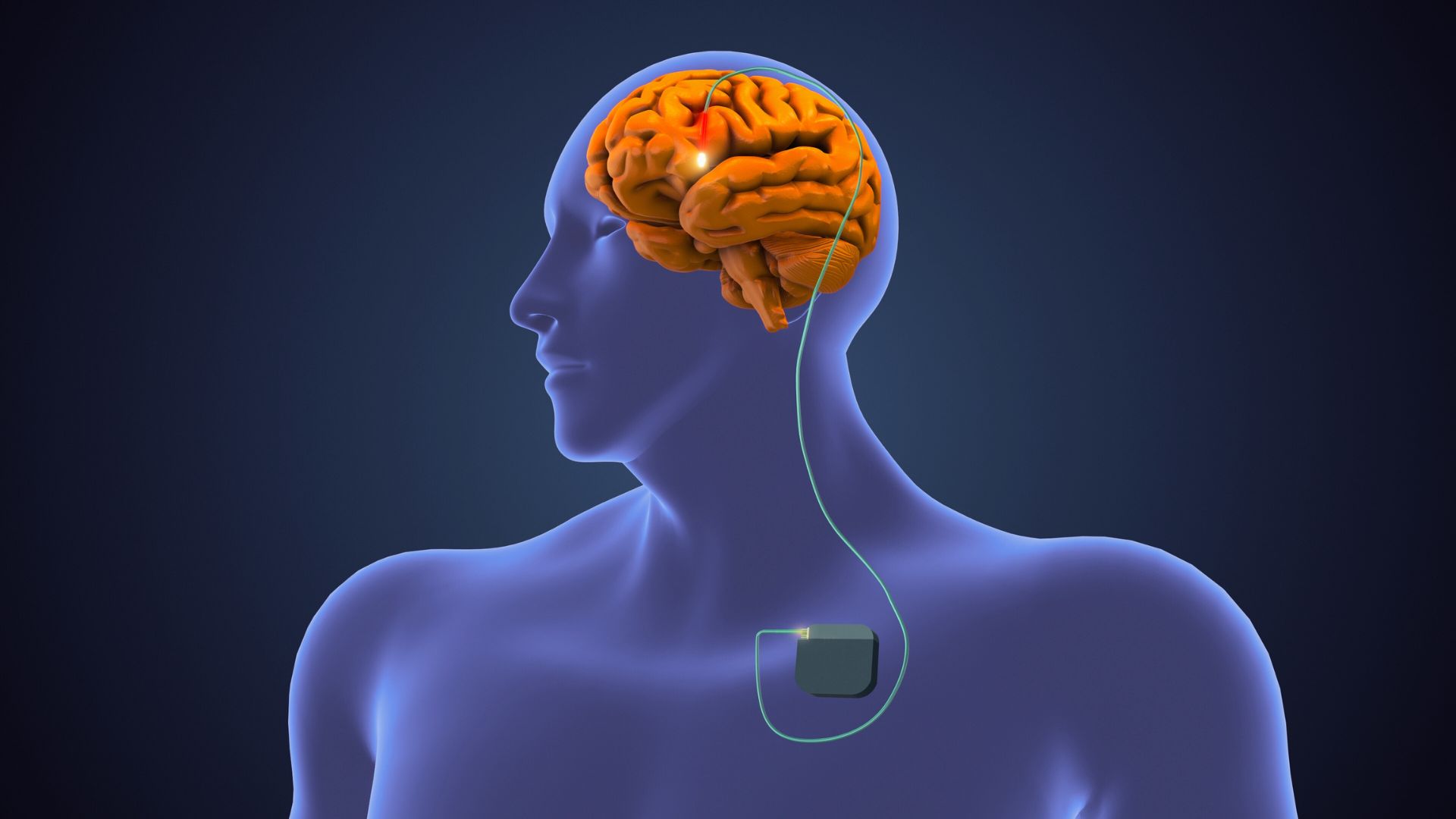Nordic pole walking is a fitness trend that has been gaining popularity worldwide for the past two decades. Although it started as an off-season activity for skiers, it has become an effective tool for stroke and Parkinson’s disease rehabilitation, as well as a great way to engage seniors in a low-impact, full body toning cardiovascular exercise.
In this article, we will discuss the benefits of Nordic pole walking for seniors and how we use Nordic walking in rehabilitation for people with neurological conditions. We will also provide an overview of proper technique and the equipment you need to get started.
Table of Contents:
- What is Nordic walking?
- Benefits of Nordic pole walking
- Nordic walking technique
- Nordic pole walking equipment
- Nordic pole walking for seniors
- Nordic pole walking and neurological rehabilitation
- Nordic pole walking for stroke rehabilitation
- Nordic pole walking for Parkinson’s disease
- Conclusion
What Is Nordic Walking?
Nordic pole walking is a full body exercise that involves walking using specially-designed poles, similar to ski poles. Originating in Finland, it started as an off-season activity for skiers. It has since gained traction for hikers and trekkers who wanted to ease the strain of walking.
It is now a very common exercise regimen for a lot of adults who are looking for a low-impact and cost-effective activity they can engage in alone or with a group. Nordic pole walking engages the arms, legs and core making it a good cardiovascular exercise that also tones the upper body.
Benefits of Nordic Pole Walking
Nordic walking requires the involvement of the upper body. With each stride, the arms apply force to the walking poles instead of just relying on just the legs. Because Nordic walkers use their entire body during this activity, it is a higher-intensity activity compared to regular walking. As a result, Nordic walkers will experience a greater increase in heart rate at any given pace compared to regular walking, without causing extra strain on the body.
The additional power poles give walkers allows them to work more efficiently to increase their heart rate without it feeling so hard. In addition, by engaging more muscles, it results in up to 67% more calories burned than regular walking.[i]
Nordic walking is a low-impact alternative to regular walking. The poles provide extra stability and unweight the lower extremity joint while improving muscle strength, endurance and cardiovascular fitness. This makes it a great exercise for those with mobility restrictions, for example individuals with reduced balance or pain in their joints.
Nordic Walking Technique
The movement of the arms, legs and torso during Nordic walking is similar to that of normal walking. The range of the arm movement regulates the length of the stride. Therefore, people with restricted arm movements will have restricted torso movement and stride length. The longer the pole thrust, the longer the stride and the more powerful swing of the torso.[ii]
Nordic Pole Walking Equipment
Nordic walking mimics the movements of cross-country skiing. You use the poles to push you forward as you walk along a trail or sidewalk.
The poles are typically shorter than those for cross-country skiing. They come in a range of lengths, grips and options of wrist straps. In addition, they often have a removeable rubber tip. The rubber tip allows for walking on hard surfaces, while the spike tip allows for walking on trails, snow, ice, and sand.
Although there are shoes that are marketed for Nordic walking, specific walking shoes are not required for this activity.
Nordic Pole Walking for Seniors
In addition to the cardiovascular and muscle strengthening benefits we already discussed, this form of exercise offers several other benefits for seniors, including:
- Improved balance and stability: The use of poles in Nordic walking provides additional support and stability, reducing the risk of falls, which is a significant concern for many seniors. The poles help seniors maintain balance, especially on uneven terrain, and can enhance confidence while walking.
- Reduced joint stress: The poles used in Nordic walking help distribute weight and impact of walking across the whole body, reducing stress on the joints, particularly the knees and hips. This makes it a low-impact exercise option that is gentler on the joints compared to activities like jogging or running.
- Reduced risk of osteoporosis: Regular practice of Nordic pole walking provides some weight-bearing exercise, which can help strengthen bones and reduce the risk of osteoporosis.
- Weight management: Nordic pole walking results in higher calorie burn compared to regular walking. This can be beneficial for seniors who are looking to manage their weight or increase their overall energy expenditure.
- Social engagement and mental well-being: Engaging in Nordic pole walking can be a social activity, allowing seniors to join group classes or walk with friends and family. Social interaction has been shown to have positive effects on mental well-being, reducing feelings of isolation and promoting a sense of belonging and community.
- Enhanced posture and coordination: Nordic walking encourages upright posture and proper body alignment. The coordinated movement of the arms and legs improves overall coordination and motor skills, which can be particularly beneficial for seniors who may experience age-related decline in these areas.
It is important for seniors to consult with their healthcare provider before starting any new exercise program to ensure it is appropriate for their individual health condition and fitness level.
Nordic Walking and Neurological Conditions
Nordic walking is a great activity for most people who can walk. However, it is a particularly well-suited to those with neurological conditions such as a stroke and Parkinson’s Disease. One of the important considerations in neurological rehabilitation is providing a treatment intervention that is both the right intensity and retrains the affected neurological circuits in the brain. When it comes to walking as a goal for this population, Nordic pole walking, does both.
Firstly, it is more intense than regular walking, making it a great strategy for gait re-education. The increase in physical activity also increases brain activity, which is important for rehabilitation.
It activates and retrains the neurological circuits responsible for controlling walking. In addition, as balance is often reduced in people with neurological conditions, the increase contact with the ground due to the poles allows for increased stability during the exercise.
Secondly, as the patient increases how much Nordic walking they do, the muscles involved to get stronger. This, in turn, will help them walk for longer. As the muscles strengthen and the individual walks more, it may translate into an improvement in their regular walking patterns.
Pushing into the poles activates the postural muscles that are responsible for keeping us upright as well as making the individual more conscious of how they are walking. In turn, these factors, result in an increase in walking speed and distance in this population.[iii]
Nordic Walking for Stroke Rehabilitation
Gait retraining is a common goal after a stroke. Often after a stroke, individuals will walk with a shuffling pattern (smaller stride lengths) and have their arms out to the side to help with their balance, because of their fear of falling.
Nordic poles (such as activator poles) increase the individuals base of support, therefore increasing their sense of balance. In turn this increases their stride length and their walking speed as well!
Nordic Walking for Parkinson’s Disease
One of the common signs of Parkinson’s disease is bradykinesia (slow and small movements). Often this is exhibited as walking with slow, small quick steps and reduced arm swinging during walking.
Treatment that focuses on the amplitude of movement has been shown to be beneficial for improving mobility for those with Parkinson’s.[iv] Nordic walking involves large amplitude movements of the arms, legs and trunk which makes it a good treatment technique for this population.
In clinical practice we often use Nordic walking as a progression in gait training. With gait aids such as canes and walkers there is an increased ability to weight-bear through the upper extremities.
In Nordic Walking one or both arms are positioned forward in a reaching posture helping the user rely on and strengthen their postural muscles and legs for walking and balance, rather than the upper body.
Conclusion
You may think of trekking through the snowy mountains when you hear Nordic walking mentioned, but this activity is suited to all climates, all terrains and most people who can walk.
There are many benefits to Nordic walking, for those with general mobility restrictions but also for those with a neurological condition such as a stroke or Parkinson’s disease.
A physiotherapist can help provide an individualized treatment intervention to help you work on your goals of improving your mobility and increasing your independence.
Contact us at the clinic to ask how our therapists can help you!
References
[i] Fitness trend: Nordic walking, Harvard Health Publishing,
[ii] Nordic walking, wikipedia.org
[iii] Harro CC, Shoemaker MJ, Coatney CM, Lentine VE, Lieffers LR, Quigley JJ, Rollins SG, Stewart JD, Hall J and Khoo SK (2022) Effects of nordic walking exercise on gait, motor/non-motor symptoms, and serum brain-derived neurotrophic factor in individuals with Parkinson’s disease. Front. Rehabilit. Sci. 3:1010097. doi: 10.3389/fresc.2022.1010097
[iv] Farley BG, Koshland GF. Training BIG to move faster: the application of the speed-amplitude relation as a rehabilitation strategy for people with Parkinson’s disease. Exp Brain Res. 2005 Dec;167(3):462-7. doi: 10.1007/s00221-005-0179-7. Epub 2005 Nov 11. PMID: 16283401.
Written by

















